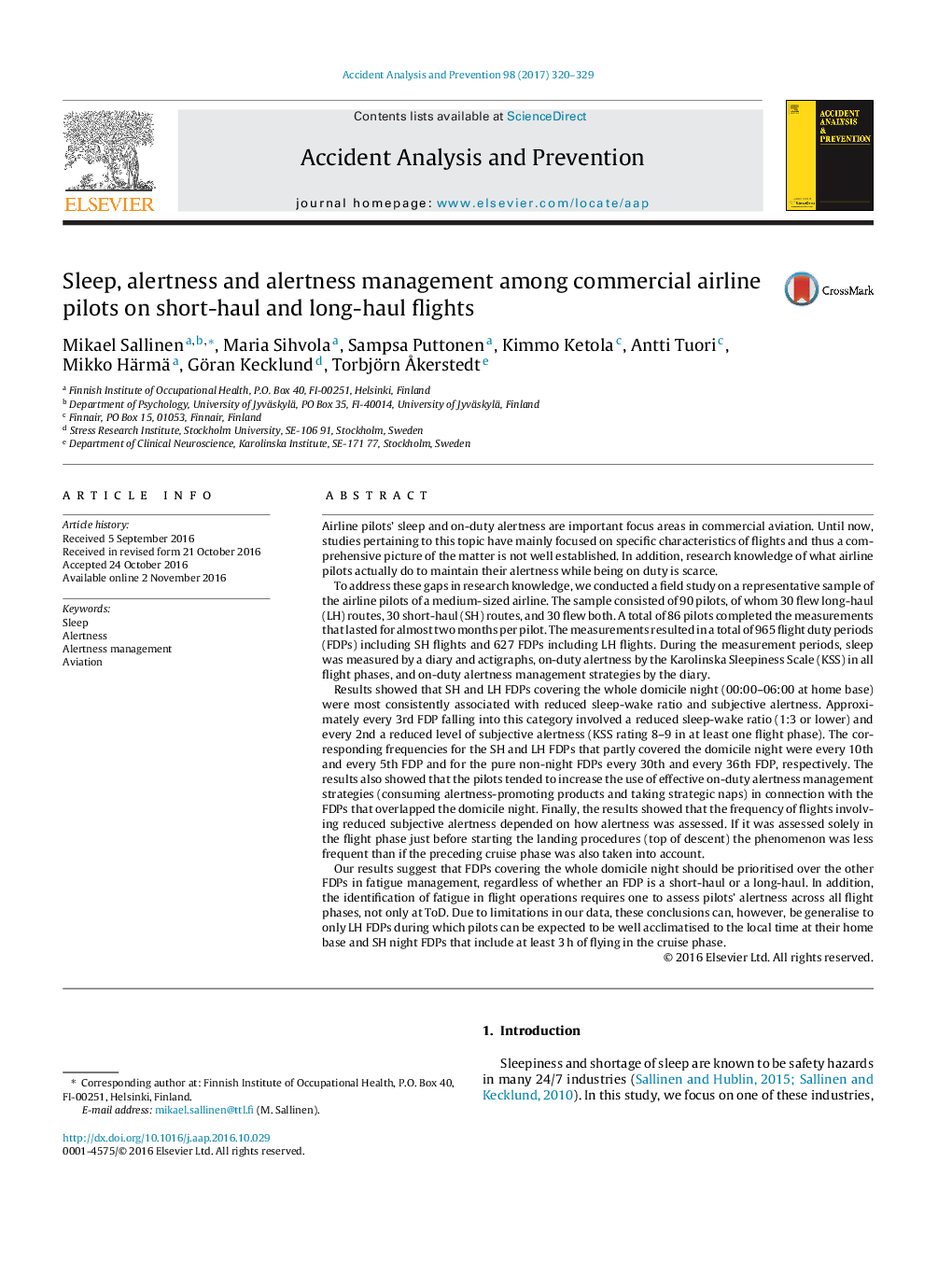| کد مقاله | کد نشریه | سال انتشار | مقاله انگلیسی | نسخه تمام متن |
|---|---|---|---|---|
| 4978846 | 1452900 | 2017 | 10 صفحه PDF | دانلود رایگان |
- Flights covering the whole domicile night are most associated with sleep-wake disturbances.
- Pilots use alertness management strategies especially while flying at domicile night.
- Identification of tiring flights depends on which of the flight phases are studied.
Airline pilots' sleep and on-duty alertness are important focus areas in commercial aviation. Until now, studies pertaining to this topic have mainly focused on specific characteristics of flights and thus a comprehensive picture of the matter is not well established. In addition, research knowledge of what airline pilots actually do to maintain their alertness while being on duty is scarce.To address these gaps in research knowledge, we conducted a field study on a representative sample of the airline pilots of a medium-sized airline. The sample consisted of 90 pilots, of whom 30 flew long-haul (LH) routes, 30 short-haul (SH) routes, and 30 flew both. A total of 86 pilots completed the measurements that lasted for almost two months per pilot. The measurements resulted in a total of 965 flight duty periods (FDPs) including SH flights and 627 FDPs including LH flights. During the measurement periods, sleep was measured by a diary and actigraphs, on-duty alertness by the Karolinska Sleepiness Scale (KSS) in all flight phases, and on-duty alertness management strategies by the diary.Results showed that SH and LH FDPs covering the whole domicile night (00:00-06:00 at home base) were most consistently associated with reduced sleep-wake ratio and subjective alertness. Approximately every 3rd FDP falling into this category involved a reduced sleep-wake ratio (1:3 or lower) and every 2nd a reduced level of subjective alertness (KSS rating 8-9 in at least one flight phase). The corresponding frequencies for the SH and LH FDPs that partly covered the domicile night were every 10th and every 5th FDP and for the pure non-night FDPs every 30th and every 36th FDP, respectively. The results also showed that the pilots tended to increase the use of effective on-duty alertness management strategies (consuming alertness-promoting products and taking strategic naps) in connection with the FDPs that overlapped the domicile night. Finally, the results showed that the frequency of flights involving reduced subjective alertness depended on how alertness was assessed. If it was assessed solely in the flight phase just before starting the landing procedures (top of descent) the phenomenon was less frequent than if the preceding cruise phase was also taken into account.Our results suggest that FDPs covering the whole domicile night should be prioritised over the other FDPs in fatigue management, regardless of whether an FDP is a short-haul or a long-haul. In addition, the identification of fatigue in flight operations requires one to assess pilots' alertness across all flight phases, not only at ToD. Due to limitations in our data, these conclusions can, however, be generalise to only LH FDPs during which pilots can be expected to be well acclimatised to the local time at their home base and SH night FDPs that include at least 3Â h of flying in the cruise phase.
Journal: Accident Analysis & Prevention - Volume 98, January 2017, Pages 320-329
